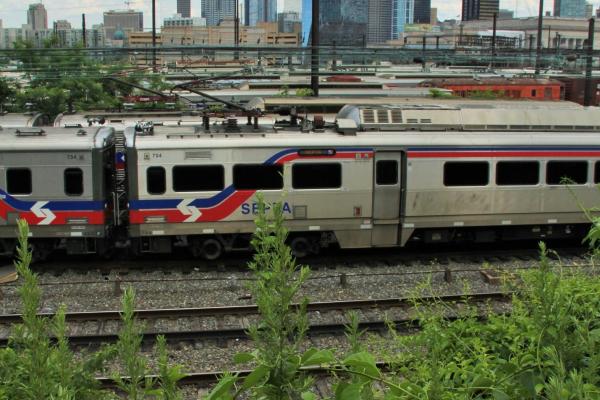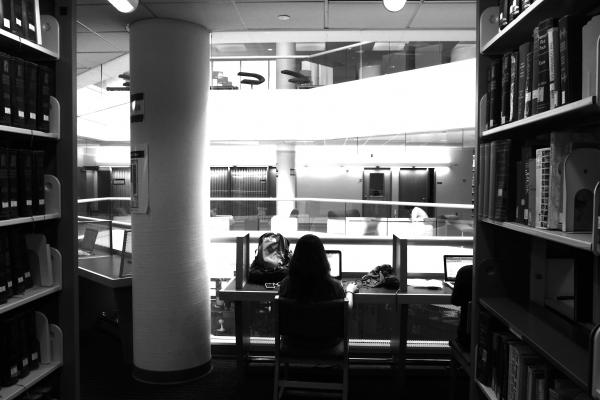Turnaround under Constantine Papadakis
Part of
Drexel President Constantine Papadakis guided Drexel out of near bankruptcy and into a new millennium by refocusing the University as a student-centered institution emphasizing three essentials: “co-op, urban location, technology.”
Drexel’s 12th president Constantine Papadakis (1995–2009) transformed the University from a nearly bankrupt, demoralized institution into a vital hub of education and urban revival. Governing Drexel as an entrepreneurial CEO, Papadakis restructured the University’s finances and administrative operations. He adopted a wildly successful marketing strategy that rebranded Drexel as student-centered and focused on three essentials to bolster enrollments: “co-op, urban location, technology.” Under Papadakis, a charismatic fundraiser, Drexel created medical and law schools and put up new research buildings, one of which honors his memory.
Constantine Papadakis took office as Drexel’s 12th president in August 1995. A former dean of engineering at the University of Cincinnati, where he was a skillful manager and successful fundraiser, the charismatic Papadakis was to govern Drexel for the next decade as a freewheeling CEO. He would manage the University heavy-handedly, eschewing the inefficiencies attendant on deliberations with faculty; he would seek neither the advice nor the consent of the Faculty Senate.[1]
Repudiating austerity as a failed approach, Papadakis’s revitalization strategy for Drexel emphasized “increasing the number and quality of students concurrently,” operating Drexel as a “business” and treating students as “customers” worthy of high-quality service. Mimicking a slogan used effectively by Bill Clinton in his 1992 presidential campaign, Papadakis was fond of saying, “It’s the student, stupid.” His marketing strategy adopted “co-op, urban location, and technology,” as a recruitment slogan; this strategy benefitted from the increasingly strong Clinton-era economy and Philadelphia Mayor Ed Rendell’s spectacularly successful campaign to revitalize Center City.
Papadakis astutely recognized that by incrementally raising, not lowering, tuition costs, Drexel would attract more and better qualified students—he wagered correctly that applicants would equate higher tuition with higher quality. Drexel’s enrollments soared from 9,000 in the 1996 fiscal year to 16,000 in 2003, with an accompanying increase in the mean SAT scores of freshmen.[2]
Under Papadakis, Drexel not only increased the size and quality of the student body, it also strengthened its graduate and research programs. Papadakis’ most important managerial achievement was the University’s 2003 acquisition of medical and professional schools that had recently operated under the aegis of the bankrupt Allegheny University of the Health Sciences. Once acquired, Papadakis consolidated the Medical College of Pennsylvania and Hahnemann Medical College, among other entities, to form the Drexel University College of Medicine, the College of Nursing and Health Professions, and the School of Public Health—with a total of 13,000 new Drexel employees. It was also a marketing coup; David Paul notes:
For Papadakis, the potential to acquire a medical school offered Drexel a means to enter the growing health care market, as well as access to the research funding streams of the National Institutes of Health and the pharmaceutical companies. The potential for linking an engineering university with a health care complex could further differentiate Drexel University in the higher education market.[3]
Other curricular expansions included the addition of a school of education in 1997, the opening of a law school in 2005, and the opening of a Sacramento, California campus for the LeBow College of Business in 2009 (the California venture would close in 2015).[4] Papadakis presided over the building of new residence halls and the renovation of older buildings as dormitories; perhaps the most adventuresome of these dormitories was the postmodern Millennium Hall, on 34th Street south of Powelton Avenue. Academic buildings completed or launched by Papadakis included the Bossone Research Enterprise Center for Scientific Research, on the 3100 block of Market Street; the Kline School of Law, on the 3300 block of Market Street; and the Papadakis Integrated Sciences Building, on the corner of 33rd and Chestnut Streets. Lastly, a state-of-the-art recreation center and basketball arena on the 3300 block of Market Street, replete with a high-end restaurant, is credited to Papadakis.[5]
Constantine Papadakis died of cancer in 2009.



